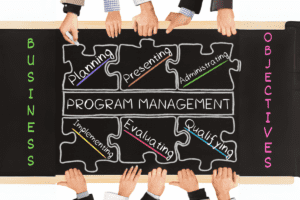How Do Agile Contracts Compare To Fixed Price And Time and Materials Contracts?
Confused about which contract to use for your software development project? Selecting the right type of agreement can significantly affect the outcome and success of your endeavor.
This comprehensive guide illuminates the differences between Agile, Fixed Price, and Time & Materials contracts, arming you with essential knowledge to make an informed decision. Ready? Let’s dive into the world of tech contracts and discover which one is tailor-made for your needs!
Key Takeaways
- Contracts are important agreements that outline the terms and conditions of a project.
- Fixed Price contracts have a set price for the entire project, providing cost certainty but limited flexibility for changes in scope.
- Time & Materials (T&M) contracts allow for more flexibility in adjusting the scope and timeline of a project, as costs are reimbursed based on actual materials used.
- Agile contracts prioritize collaboration and adaptability, allowing for refining requirements throughout the development process. They offer increased flexibility compared to traditional contracts.
What are Agile Contracts?
Software development projects primarily use Agile Contracts because they are flexible and adapt well to the Agile methodology. These contracts have different payment terms than traditional ones. They promote greater collaboration and reduce risks.
However, when selecting the right contract for a project, you must also weigh its unique risks.
Why Agile Contracts are Needed
Agile contracts are needed in software development projects because they promote collaboration, flexibility, and adaptability. Unlike traditional fixed-price contracts, agile contracts allow for refining requirements throughout the development process.
This means that project teams can work together to deliver incremental results and make adjustments as needed. Agile contracts also offer different options such as fixed-fee per iteration or time and materials setups with bonuses, caps, or holdbacks.
These options ensure that the contract aligns with the project’s goals and allows for more efficient collaboration between the supplier and customer. Overall, agile contracts enable a more dynamic and responsive approach to software development projects.
How They Differ from Traditional Contracts
Agile contracts differ from traditional contracts in several key ways. Unlike traditional contracts that focus on fixed scope and requirements, agile contracts prioritize collaboration and adaptability.
Traditional contracts typically have a specific set of deliverables and a fixed timeline, whereas agile contracts allow for incremental delivery based on the changing needs of the project.
In traditional contracts, all requirements are defined upfront in detail before the project starts. However, agile contracts embrace uncertainty and encourage flexibility throughout the development process.
This means that instead of having all requirements specified at the beginning, agile projects can adjust their priorities and specifications as they go along.
Furthermore, while traditional contracts often involve strict change management processes for any alterations to scope or requirements (which can be time-consuming), agile contract models like time-and-materials (T&M) offer more flexibility for change requests.
Agile agreements acknowledge that changes are inevitable in software development projects and provide mechanisms to accommodate them without heavy administrative burdens.
Payment Terms
In Agile contracts, payment terms are typically based on deliverables and milestones achieved throughout the project. Unlike traditional fixed price contracts or time and materials contracts, where payments may be made upfront or on an hourly basis, Agile contracts allow for incremental payments based on completed work.
This ensures that both the client and the vendor have a clear understanding of what needs to be accomplished before payment is made. The flexibility in payment terms also allows for adjustments if there are changes in project scope or requirements along the way.
Ultimately, Agile contracts provide a fair and transparent approach to payment that aligns with the iterative nature of Agile software development projects.
Agile Contracts Benefits and Risks
Agile contracts have several benefits for project managers and vendor managers. One key advantage is that they allow for flexibility in project scope and requirements, making it easier to adapt to changes during the development process.
This can help ensure that the final product meets the needs of the client or customer. Agile contracts also promote collaboration between the development team and stakeholders, allowing for frequent communication and feedback throughout the project.
Additionally, with time-and-materials (T&M) contracts, where payment is based on actual work completed, there is greater transparency in terms of cost and progress. However, there are also risks associated with agile contracts.
For example, without a clear understanding of project scope upfront, timelines may be harder to estimate accurately. There is also a risk that costs may increase due to changes requested by stakeholders during development.
What Are Some Key Elements of a Contract?

Contracts are important agreements between parties that outline the terms and conditions of a project or business relationship. These contracts can take various forms, such as Master Service Agreements (MSAs) or traditional software development contracts.
Why Contracts Are Important
Contracts keep things clear and fair. They tell all people what their jobs are. If there is a problem, the contract gives answers. It can stop fights before they start. A good contract makes sure the expected value is provided and everyone gets paid for their work.
It also shows who owns the project and who has to fix problems if they happen. Most of all, contracts help work get done well and on time.
MSAs
MSAs, or Master Service Agreements, are foundational in business relationships. These contracts set the general terms and conditions of the relationship between parties, ensuring both sides understand their overarching obligations and rights.
MSAs typically address areas like confidentiality, intellectual property rights, and jurisdiction. They might also touch on general payment terms, but specific payment details for individual projects or tasks are often reserved for subsequent documents like Statements of Work (SOW).
A well-drafted MSA ensures that everyone is on the same page from the outset, streamlining future negotiations and providing a framework to address any issues that arise. In industries like software development, MSAs facilitate smoother collaborations between teams and clients by setting clear expectations at the relationship’s beginning.
Traditional Software Development Contracts
In traditional software development contracts, we often find fixed price and time and materials setups. With fixed price ones, all work details get set before the project starts. This means both cost and schedule are also set early on.
There’s no change unless all parties agree to it. On the other hand, time and materials contracts let costs flex based on actual work done and resources used. This contract type suits projects where scope or needs might change through the course of development.
How Do Fixed Price Contracts Work?

A fixed price contract is a type of agreement where the supplier and the customer agree on a specific scope of work for a predetermined price.
What is a Fixed Price Contract?
A fixed price contract is an agreement between a customer and a supplier where they agree on a specific price for a project. In this type of contract, the end price is definitively set as long as the project scope doesn’t change too much.
The client knows the total price upfront before starting the project, which can provide them with cost certainty. The vendor determines the price based on their experience with similar projects, ensuring that both parties are clear about what to expect in terms of costs.
Fixed Price Contract Best Practices
Fixed price contracts can be advantageous when managed properly. Here are some best practices to consider. First, clearly define the scope of work and deliverables in detail to avoid misunderstandings later.
Next, establish clear milestones and deadlines to ensure project progress is tracked effectively. It’s also important to have a well-defined change request process in place, as any modifications may impact the final price.
Additionally, regular communication with the client throughout the project helps maintain transparency and manage expectations. Finally, accurately estimating costs and risks upfront is crucial for successful bidding and overall project execution.
Fixed Price Contract Pitfalls
Fixed price contracts can be appealing because they provide a clear and predictable budget for a project. However, there are some pitfalls to be aware of. One major drawback is the lack of flexibility when it comes to changes in scope.
If there are unforeseen circumstances or requirements change during the project, it can result in additional costs that were not accounted for in the fixed price contract. This means that the total cost may exceed the budgeted amount, causing financial strain on both parties involved.
Vendors often increase their prices in fixed price contracts to account for uncertainties and unforeseen challenges that might arise during the project. This “risk premium” ensures they’re covered if the project becomes more complex or time-consuming than initially anticipated.
Additionally, fixed price contracts have a higher risk/reward profile compared to other contract types due to their inflexibility. It’s important to carefully consider whether this type of contract is suitable for your project and if there are provisions in place to handle potential changes without compromising the agreed-upon budget and timeline.
Are Time and Materials Contracts Good For Software Development?
Time and materials Contracts, also known as T&M Contracts, are a popular choice for software development projects. Learn the best practices and pitfalls of this contract type to make an informed decision for your project.
Read on to find out more!
What is a Time & Materials Contract?
Projects with uncertain work scope or duration often use a Time & Materials (T&M) contract.
In this agreement, clients pay the contractor based on the actual hours worked and the cost of materials used. This contract type is flexible, and ideal for Agile projects or those with evolving scope.
While T&M contracts work well when fixed-price agreements aren’t clear, clients must watch them closely to prevent unexpected cost overruns.
Time & Materials Best Practices
Time & Materials (T&M) contracts can be a beneficial approach for projects with uncertain or evolving requirements. To ensure a successful T&M contract, there are some best practices to keep in mind.
Firstly, it’s essential to have clear and well-defined project objectives. This helps both the client and the development team understand what needs to be achieved. Secondly, regular communication and collaboration between the client and the development team is crucial.
It allows for continuous feedback and ensures that any changes or updates can be addressed promptly. Additionally, having transparent reporting on project progress and costs is vital for effective cost management.
This helps both parties stay informed about the project’s financial aspects.
Another important best practice is setting realistic expectations regarding deliverables, timelines, and milestones. Clearly defining these factors from the start avoids misunderstandings later in the project.
Furthermore, incorporating agile methodologies into T&M contracts can enhance overall efficiency as it promotes flexibility and adaptability when faced with changing circumstances.
Lastly, maintaining proper documentation throughout the project duration is essential in T&M contracts. Documenting all changes, approvals, milestones achieved, hours logged by each team member will provide transparency to both parties involved.
Time & Materials Pitfalls
One of the pitfalls of Time & Materials (T&M) contracts is a lack of budgeting control. With T&M contracts, the payment is based on fixed hourly rates and material costs. This means that the project’s overall cost can easily exceed the initially budgeted amount, especially if there are unexpected changes or delays.
Unlike fixed price contracts where there is a set price for the project, T&M contracts can result in unpredictable expenses. It’s important to carefully monitor and track costs to avoid going over budget when using T&M contracts.

How to Choose the Right Contract Type for Your Project?
Consider the project factors and recommended contract types to make an informed decision. Find out more about the common mistakes to avoid in contract selection.
Factors to Consider
When choosing the right contract for your project, there are a few important factors to consider. First, think about the level of flexibility you need. Fixed price contracts provide certainty in terms of budget, but they may not allow for changes or adjustments as the project progresses.
On the other hand, Time & Materials (T&M) contracts offer more flexibility and transparency, allowing for changes and adjustments along the way.
Another factor to consider is the level of risk that you’re willing to take on. Fixed price contracts transfer most of the risk to the vendor, while T&M contracts share some of that risk between both parties.
If you want more control over costs and deadlines, a fixed price contract might be a better choice. However, if you prefer more flexibility and are open to adjusting requirements throughout the project, a T&M contract could be a good fit.
Lastly, think about your organization’s specific circumstances and needs. Consider factors such as project size and complexity, available resources and expertise internally or externally (outsourcing), as well as any specific requirements or regulations that need to be met.
Recommended Contract Types
When choosing the right contract type for your project, it’s important to consider your specific circumstances and organizational needs. For projects with well-defined requirements and little likelihood of changes, a Fixed Price contract can be suitable.
This type of contract provides a clear scope and budget from the start. On the other hand, if your project is likely to have changing requirements or an uncertain scope, a Time & Materials (T&M) contract may be more appropriate.
T&M contracts allow flexibility and incentivize vendors to complete the project efficiently. It’s crucial to carefully evaluate the pros and cons of each contract type before making a decision that fits both your project goals and budget constraints.
-[Blog Outlines]:
6. Choosing the Right Contract for Your Project.
Common Mistakes to Avoid
One common mistake to avoid when choosing a contract for your project is not considering the complexity and duration of the project. Fixed-price contracts may not be suitable for long-term or highly advanced projects, as they do not allow for flexibility in scope changes.
On the other hand, time and materials (T&M) contracts are more adaptable but require careful management to prevent additional costs from exceeding the budget. It’s also important to avoid overlooking the need for transparency and detailed invoicing in T&M contracts, which can help keep both parties accountable throughout the project.
By carefully considering these factors and selecting the right contract type, you can set your project up for success.
FAQs
1. What are Agile contracts, and how do they compare to Fixed Price and T&M Contracts?
Agile contracts are designed for software projects that follow agile methodologies, prioritizing adaptability, iterative progress, and close collaboration between teams. Unlike Fixed Price contracts, which lock in a fixed budget for the entire project, or Time & Materials (T&M) contracts, which charge based on actual hours worked and resources consumed, Agile contracts accommodate evolving requirements and changes, ensuring both flexibility and alignment with project goals.
2. When should I choose an Agile contract over a Fixed Price or a Time-and-Materials contract?
If your project size changes often and needs fast updates, Agile contracts might be better. For long-term projects with clear goals from the beginning of the project, you may choose fixed-price or time-and-materials contracts.
3. How does an outsource company use these contracts?
An outsource software development company can offer any of these pricing models – agile fixed price, traditional fixed-price, or time-and-materials vs fixed price depending on what suits best for developing the software.
4. Are there hybrid types of these contracts?
Yes! There are Capped T&M Contracts, Target-Cost Contracts, and Incremental Delivery Agreements that mix aspects of agile, waterfall projects and time-and-material terms for complex projects.
5. Can these agreements include things like custom software licenses?
Yes, they do! The terms agreed upon in an outsourcing contract can include product development rights as well as app development requirements including specific software licences needed.
Conclusion
In conclusion, when it comes to software development projects, Agile contracts offer more flexibility and adaptability compared to Fixed Price and Time & Materials contracts. They prioritize collaboration and value between the parties involved, allowing for a more iterative approach.
While Fixed Price contracts can still be used in Agile projects, they may not provide the same level of agility. Ultimately, the choice of contract type depends on the specific project requirements and budget considerations.
If you liked this article, remember to subscribe to MiamiCloud.com. Connect. Learn. Innovate.






